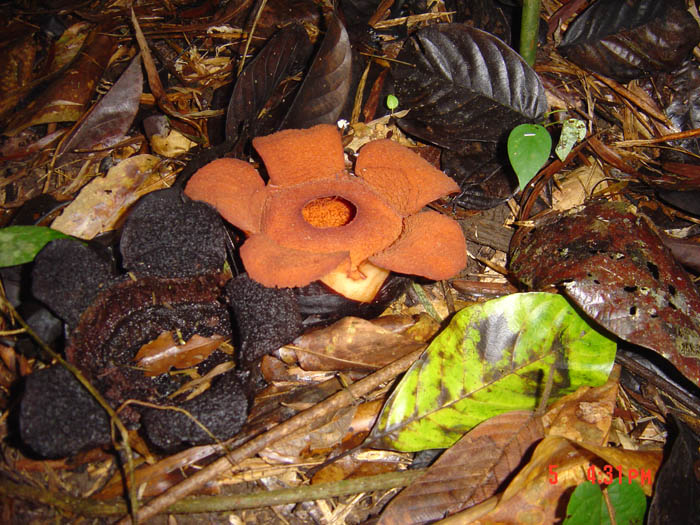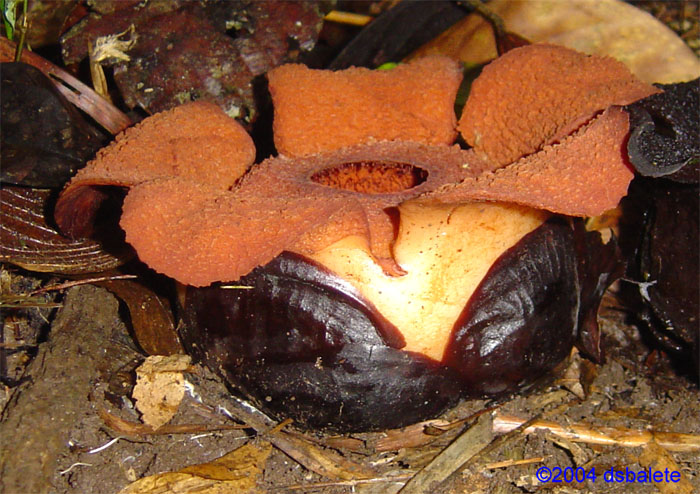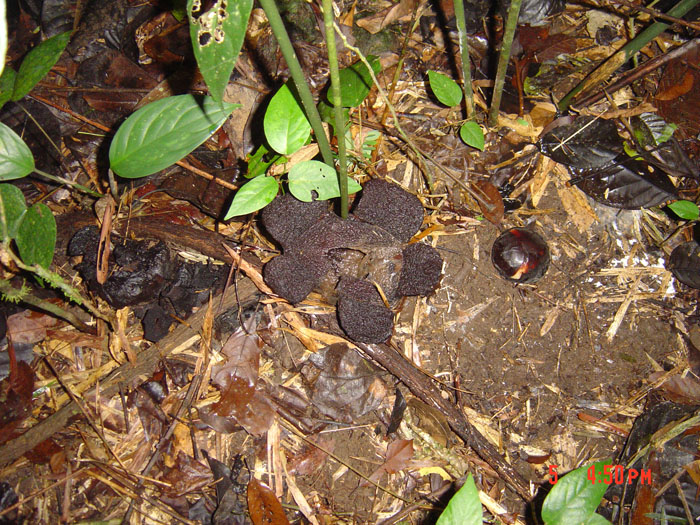Rafflesia aurantia Barcelona, Co and Balete
This Rafflesia species is named for the orange color of its
flower.
This species was named in the following
publication:
Barcelona, J. F., L. L. Co, D. S. Balete, and N. A. Bartolome.
2009. Rafflesia aurantia
(Rafflesiaceae): a new species from northern Luzon, Philippines.
Gardens' Bulletin Singapore 61 (1): 17-27.
This species is the ninth species of Rafflesia
named from the Philippines, seven of which having been named after
2002! This species most resembled R. tengku-adlinii
of Borneo in that both have orange flowers with relatively indistinct
markings. It differs from this species, however, in features of
the ramenta, disk processes, and anther number. There are
currently no species of Rafflesia
that occur on both Borneo and the Philippine islands. This
suggests that the species have limited dispersal ability and that
disjunctions are unlikely.
Rafflesia aurantia is only
known from its type locality in the Quirino Protected Landscape (QPL),
Quirino Province on Luzon Island, Philippines. This population
occurs in a disturbed lowland dipterocarp forest on the slopes of the
Mungiao Mountains near the headwaters of the Cagayan River.
Although the QPL has over 200,000 ha under protection, over
30,000 ha were recently excised, thus, the QPL is now fragmented into
three parcels. The
discovery of Rafflesia aurantia
in the Sierra Madre Mountains of Luzon highlights the high biodiversity
present in this region. It also represents another example of the need
to conserve the rare and threatened species of this region that also
includes animals such as the Philippine Eagle (Pithecophaga jefferyi).

A fully expanded flower of Rafflesia
aurantia with a senescent flower (left). Photo by Danny
Balete.

A flower in face view showing disk processes through diaphragm. Photo
by Danny
Balete.

A flower in side view showing its urn-shape. Photo by Danny
Balete.

Senescent flowers and a bud. Photo by Danny
Balete.
SIUC / College of Science / Parasitic Plant
Connection / Rafflesiaceae
URL:
http://www.parasiticplants.siu.edu/Rafflesiaceae/Raff.aurantia.page.html
Last updated: 29-July-10 / dln



